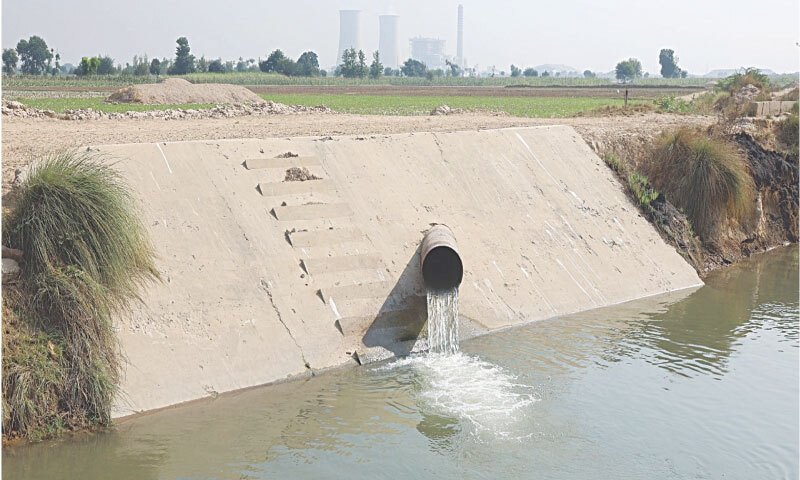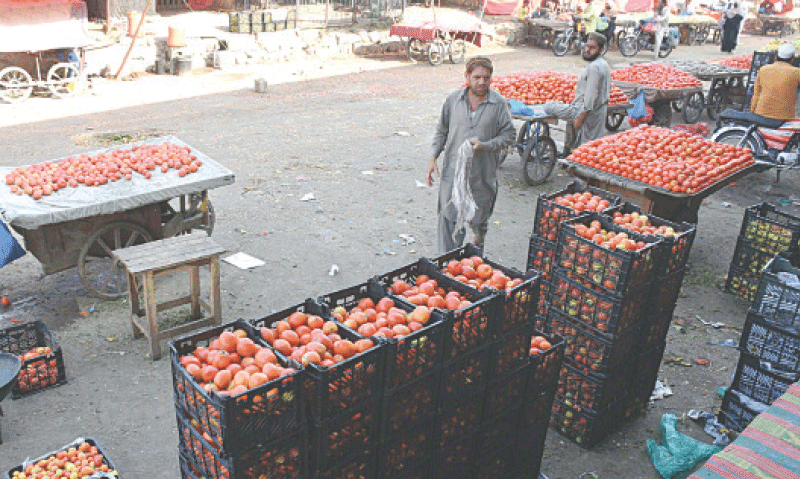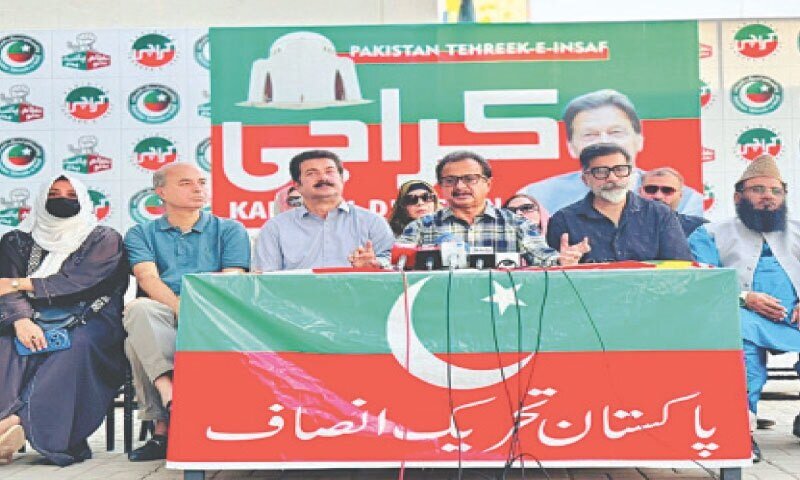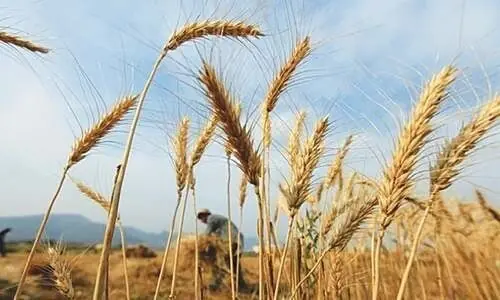When officials first arrived in villages near Qadirabad in 2014, they brought promises wrapped in the language of progress. The Sahiwal coal-fired power plant, they told residents, would be Pakistan’s flagship energy project — a 1,320 megawatt giant that would end electricity shortages and bring prosperity to central Punjab’s fertile heartland. They promised jobs, schools, hospitals and a brighter future.
In Village 76-5R, the local member of the provincial assembly and member of the National Assembly told farmers this was a “once-in-a-generation opportunity”. China was investing billions in the China-Pakistan Economic Corridor (CPEC), they said, and Sahiwal would be at its centre. There would be 3,700 construction jobs and 1,600 permanent positions. Technical training centres would teach youth valuable skills. Girls’ schools would be built. A hospital with seven to 10 beds would serve the community. Roads connecting villages to markets would be paved. The three most-affected villages would receive free electricity.
What officials didn’t tell communities — what they conveniently left out — was that none of this would come to pass.
What they didn’t say was that fertile fields, cultivated since the British built the Canal Colonies in the 1800s, would become a wasteland of coal ash and contaminated water. They didn’t mention that families would watch their children struggle to breathe, their orchards wither and their groundwater sink deeper into the earth year after year.
Promised as a beacon of progress and development, the decade-old Sahiwal coal-fired power plant was meant not just to address Pakistan’s crushing energy shortages but to bring prosperity
to Punjab’s heartland. Instead, its bright lights have darkened the lives of those who gave up
their land for it, leading to displacement, disease, environmental disaster and despair…
“ANOTHER 1947”
Muhammad Siddique’s family had worked their six murabbas [one murabba is equivalent to 25 acres] of land for generations. “We had been cultivating this land since our grandfathers’ time,” he says, his voice breaking. “Suddenly, without any real consultation, it was taken from us.”
The acquisition happened fast — too fast for most families to fathom what was happening. District officials didn’t come to negotiate. They came to inform. Through politically aligned local leaders, word spread that the land was being taken for a development project that would both serve the communities and the national interest by increasing energy production. When Siddique hesitated to accept the compensation — approximately Rs 2.07 million per acre for land worth far more — a district education official threatened him with disciplinary action.
What the government did next was particularly cunning. Instead of negotiating with family patriarchs who controlled large holdings, they unilaterally processed hereditary divisions. Compensation checks were issued directly to individual heirs, including women. A female assistant commissioner was brought in specifically to encourage women to claim their shares. While this appeared progressive on paper, it served a backhanded purpose: it atomised large landholdings into hundreds of small claims, fracturing families and preventing unified resistance.
Najam, another landowner, acknowledges bitterly that they’d failed to challenge the acquisition within the legal timeframe required by the Land Acquisition Act. By the time they mobilised, it was too late. When legal action was eventually pursued, it met a swift and decisive end. The Multan bench of the Lahore High Court dismissed the Sahiwal coal-fired power plant case, with the government’s point of view on such cases being that the land was acquired in the larger public interest, to keep the lights on nationally. According to a community elder, “This act illustrates a clear alignment of the judiciary with the executive’s interests and priorities. It left us with the widespread sentiment that institutional mechanisms were rigged against us, prioritising national-scale infrastructure over the rights and grievances of the citizens.”
One villager describes the loss as “another 1947” — invoking the trauma of Partition, when millions were stripped of their homes and lands. The comparison isn’t hyperbolic. For farming families whose identity, livelihood and generational continuity were rooted in that soil, the displacement was indeed a rupture comparable to a historical catastrophe.
The promise of jobs turned out to be perhaps the cruellest deception, if only because the plant jeopardised the existing farmland livelihoods. While officials claimed the plant would create thousands of positions, the reality is starkly different. Only 67 per cent of residents say the plant generated more than 50 jobs. A striking 27 per cent believed no jobs were created at all.
A MANUFACTURED WASTELAND
Walking through Village 76-5R, one hears the same refrain: “Not a single promise was fulfilled.”
Before the plant, farmers in the area relied on three moghas [canal water outlets] for irrigation. Now, only one functions. The Irrigation Department shut down the other two to divert water to the coal plant’s massive cooling systems. Despite repeated complaints to the executive engineer of the Lower Bari Doab Canal (LBDC), nothing has been done.
The numbers tell a grim tale. Groundwater levels have plummeted from an average depth of 68 feet to 172 feet. In Village 62-4R, the worst-affected area, water that once flowed at 100 feet now requires drilling to 250 feet. Over 80 percent of surveyed residents reported deteriorating water quality. The water that remains is often contaminated, unfit for drinking or irrigation.
Farmers have been forced to turn to expensive tube wells powered by diesel or solar. Muhammad from Village 75-5R calculated that his irrigation costs have tripled. “We tried to build our own mogha through collective effort,” he says, “but without departmental approval, it remains non-functional. They’ve left us to fend for ourselves.”
Furthermore, the air quality deterioration in the neighbourhoods around the plant is too palpable to ignore. When asked about environmental changes, 89 percent of residents say the air has grown noticeably worse since the plant began operations.
“Black soot settles over clothes left outside overnight, especially during summer,” one woman shares. Rickshaw drivers state that winter air has become increasingly polluted, making it difficult to breathe — a problem they never experienced before. One elderly resident of Village 64-5L put it simply: “This has been the hottest summer I’ve experienced in 40 years.”
Coal dust from the plant’s open-air storage and transportation doesn’t just pollute the air, it coats crops, blocking sunlight and disrupting growth cycles. The 4.4 million tonnes of imported coal arriving annually from Indonesia, South Africa and Australia leaves its mark on every surface, every lung and every leaf.
As per our findings, the health crisis is perhaps the most heartbreaking reality. Local clinics report that respiratory illnesses now dominate their workload, accounting for 47 per cent of all cases. Chronic coughing, shortness of breath, asthma and lung infections have become endemic in villages surrounding the plant.
A doctor in Village 76-5R couldn’t have put it more plainly: “We are seeing more patients with lung issues than ever before.” But it’s not just respiratory problems. Eye irritation, recurring fevers, skin allergies, hepatitis, liver dysfunction — the catalogue of ailments grows longer each year. According to the doctor, there have even been “unexplained sudden deaths.”
The crisis extends beyond humans. A veterinarian notes rising livestock illnesses, particularly among buffaloes. A farmer from 76-5R explains: “Foot-and-mouth disease has increased dramatically since the plant was built. Our animals drool, stop eating fodder and their milk production decreases. We don’t know if it’s the air or the water, but this situation didn’t exist before.”
Community members say the villages, in what was once known as Punjab’s ‘fruit basket’, is dying. Orchards that produced abundant guava and black plums for generations are withering. “The trees don’t grow like before, and fruits have disappeared,” farmers state repeatedly. Vegetables such as bitter gourd, pumpkin and onions — once commonly grown — are now difficult to cultivate. Even wheat yields are declining.
Ali, a lawyer from Village 76-5R, has become one of the plant’s most vocal critics. He has documented his dying orchards through videos on TikTok and Facebook, showing guava trees that failed to survive despite repeated replanting efforts. Several of his videos were later removed from both platforms without explanation — an act he believes was intended to silence dissent.
The plant generates approximately 3,000 kilogrammes of coal ash daily. This waste contaminates both land and water. Wastewater from the plant is channelled through pipelines into the Ravi River via the Seem Nala drainage channel. Farmers such as Siddique report that this polluted water, when reused for agriculture through solar-powered pumps, damages soil fertility and reduces crop productivity.
A rather alarming number of farmers say that agricultural productivity has declined. The ash that settles on fields chokes crops and diminishes fertility. Some farmers even point to the plant’s intense floodlights as an additional factor disrupting natural growth cycles.
THE ILLUSION OF OPPORTUNITY
The promise of jobs turned out to be perhaps the cruellest deception, if only because the plant jeopardised the existing farmland livelihoods. While officials claimed the plant would create thousands of positions, the reality is starkly different. Only 67 percent of residents say the plant generated more than 50 jobs. A striking 27 percent believed no jobs were created at all.
Sunny Shah of Village 76 says, “Sepco [Southern Electric Power Company], one of the plant’s key contractors, pays local workers just Rs 25,000 per month. No one from my village earns more than that.” Most locals were hired only during construction. The few who secured operational jobs work as labourers, cooks or electricians — low-paid positions with no career advancement.
High-paying technical and managerial positions went to Chinese staff or workers brought in from other cities. The promised technical training centre either doesn’t exist or remains irrelevant to local needs. Young people who expected career opportunities found themselves relegated to cleaning, construction support or cooking.
The pay disparities are particularly galling. Some cooks reportedly earn up to Rs 100,000 per month — nearly four times more than plant labourers — mainly because they prepare food for Chinese staff. This creates not just economic inequality but social resentment.
The disruption to local mobility has also been catastrophic. Before the plant’s construction, residents of Villages 75-4R, 76-5R and 77-5R could reach Yousafwala market — their lifeline for trade and supplies — in 10-15 minutes via a railway crossing. That crossing is now permanently closed. Today, the same trip requires a 12-15 kilometre detour through an incomplete road that adds six to eight extra km to their daily commute. Nearly a decade after construction began, the roadwork remains unfinished. What was once a routine journey has become a daily grind that increases transport costs, reduces productivity and weighs heavily on families.
The alternate route, nestled between the railway line and the LBDC, has become dangerous. Residents report frequent incidents of robbery and snatching. Farmers and traders transporting goods have become routine targets. With poor lighting and no security, the road has turned into a corridor of fear, especially at dusk and dawn.
Meanwhile, the Yousafwala railway station — though close by — remains inaccessible to locals. It has been configured exclusively for the plant’s coal logistics, reinforcing the bitter reality that infrastructure now serves coal, not communities.
UNKEPT PROMISES
Of the many promises made by the authorities as listed below, few have come to fruition.
Promised: Higher secondary schools for boys and girls.
Delivered: Nothing. The existing high school was supposed to be upgraded. Ten years later, it hasn’t been.
Promised: A seven to 10-bed hospital.
Delivered: Nothing. Villagers must travel hours to Sahiwal city for medical care.
Promised: Improved roads connecting villages to markets and highways.
Delivered: Incomplete, dangerous routes that have worsened mobility.
Promised: Free electricity to the three most-affected villages.
Delivered: Nothing. The irony of living in darkness beside a power plant is not lost on anyone.
Promised: Technical training centre for the youth.
Delivered: Either non-existent or irrelevant to community needs.
Promised: Clean water schemes.
Delivered: Nothing. Water quality has deteriorated and groundwater continues to deplete.
Promised: Improvements to irrigation and sewerage.
Delivered: Nothing. Canal outlets were shut down and no sewerage improvements were made.
Even the symbolic gestures ring hollow. A girls’ school was established within the plant premises, but it remains inaccessible to the local community. It’s widely seen as a box-ticking exercise in corporate social responsibility rather than genuine investment in local education.
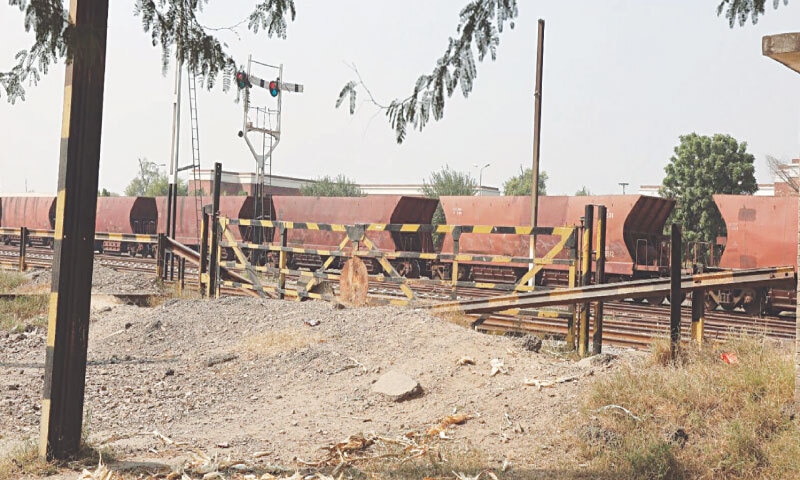
THE SURVEILLANCE
Perhaps nothing symbolises the plant’s antagonistic relationship with the community more starkly than the security regime. Residents of Villages 75-5R, 76-5R and 77-5R report frequent visits from police and elite force personnel who check national identity cards — including those of guests — and enter homes without notice or female officers present.
The absence of female constables during searches violates cultural norms and leaves families feeling vulnerable and humiliated. Women in Village 76-5R repeatedly requested that Yousafwala police station provide female officers during inspections. Their appeals were consistently ignored.
The plant’s private security teams enter villages in convoys at least once a month. Surveillance cameras around the plant trigger alerts whenever villagers approach the boundary wall, prompting rapid deployment of elite police — even when there’s no threat. “It’s as if our voices don’t matter,” one villager says. “They treat us like criminals in our own homes.”
The intimidation intensified after security incidents around the Diamer-Basha dam. Punjab’s special police unit and suspected military personnel were deployed in the area. Though the threat was unrelated to Sahiwal, it became justification for tightening control over the local population.
ANOTHER DEVELOPMENT PIPEDREAM
Time and again, the government or company officials, including the Chinese, have painted a rosy picture of the project. However, given the human and ecological cost of the project, it has turned out to be a pipedream, as is often the case with most development projects the state continues to pursue in isolation and at the cost of public interest.
Huaneng Shandong Ruyi (Pakistan) Energy (Pvt.) Limited is responsible for the operating of the Sahiwal power plant and is the Pakistani counterpart of the project’s Chinese patrons. We reached out to an official from Huaneng Shandong Ruyi (Pakistan) Energy (Pvt.) Limited, who declined to comment on our questions regarding the promises that locals say were not fulfilled.
Government officials were also contacted for their responses, but none were willing to come on the record for this Eos story. Two officials did, however, speak with us on the condition of anonymity.
Sources in a government institution affiliated with the federal power ministry say that the social and economic situation in Pakistan when the Sahiwal coal power plant was envisioned was very different from what it is now. A highly placed official of the institution reveals, on the condition of anonymity, “Between 2013 and 2015, our biggest challenge was to keep the lights on. We were running all over the world, seeking investments in power plants that could help us overcome more than 12 hours of electricity outages every day and in every part of the country. We were more concerned about adding sufficient electricity to our system than being worried about the environment.”
When asked why the government decided to set up a coal power plant in Sahiwal, the veritable food basket of the country, he says, “We needed a large power plant close to our biggest electricity load centres of Lahore and Faisalabad [which lie within a 150 kilometres radius from Sahiwal].”
He explains that the plant could not be set up on the coast because “our transmission system was incapable of transmitting electricity efficiently and smoothly from the south” of the country to its centre. “Karachi’s coastline was dotted with several power projects and we knew that setting up another power plant there would totally choke our south to centre transmission system,” he says.
One of his immediate subordinates acknowledges that, in today’s circumstances, the Sahiwal coal power plant would never have been built where it has been built. “Importing, transporting and burning coal for power generation has serious environmental costs,” he says. Though he emphasises that the machinery used in the Sahiwal coal power plant is based upon ‘super critical technology’ and thus, according to him, emits much less pollutants than other power plants, he understands why the communities living in its shadow should be worried.
According to him, “Coal power plants all over the world are known to have serious impacts on water resources and air quality in their vicinity. That is why they are being phased out from most of the European countries and that is why the government should immediately pay heed if people in and around Sahiwal have any complaints about the plant.”
But he also adds: “Pakistan does not have the luxury to phase out its coal power plants immediately, mainly because we don’t have the money required for that. Also, our coal power fleet is much smaller compared to the coal power fleets of India and China, both still getting more than 50 percent of their electricity from coal. So, even if we shut down our coal power plants tomorrow, we’ll still be feeling the climatic impacts of coal being burned in the power plants of our two big neighbours.”
THE RESISTANCE
On September 10, 2025, farmers gathered outside the Sahiwal coal-fired power plant for the Asia Day of Action Against Coal. Organised by the Pakistan Kissan Rabita Committee, in collaboration with the Asian Peoples Movement on Debt and Development, the protest highlighted coal’s impacts, such as increased flooding, erratic rainfall, heat waves and economic losses.
Protesters rejected government and corporate narratives of ‘clean coal’ and ‘transition fuels’. Their message was clear: “There is no such thing as clean coal.” They called for a just, fully funded phase-out plan that safeguards workers, communities and the planet.
But resistance comes at a cost. Several research participants shared accounts of being threatened when they tried to raise concerns. Villages such as 76-5R, 77-5R, and 75-4R remain under close surveillance. Police continue to question guests, conduct random ID checks and monitor daily life.
When asked whether the plant should continue operating, 64.6 per cent of the local respondents opposed its continuation. Only 20.2 per cent supported keeping it running. Some respondents chose to remain silent about their views due to security concerns — a silence that speaks volumes.
THE LARGER PICTURE
When China, capitalising on its solar energy achievements, proposed a $62 billion investment package for CPEC, many Pakistanis held optimistic expectations for the development of a clean energy future. However, such hopes were dashed as CPEC’s $34 billion “clean energy portfolio” was substantially compromised by the incorporation of at least nine coal-fired power facilities.
Consequently, CPEC’s operational projects continue to rely heavily on coal. Thirty-eight percent of the total generation capacity of active CPEC projects comes from coal, with wind and solar contributing only eight percent and hydro-electric power accounting for 54 per cent. This dependency persists despite coal’s severe public health impacts. Air pollution causes annually an estimated 128,000 deaths, with Pakistan home to three of the world’s most polluted cities.
The Sahiwal plant isn’t just one failed development project — it’s a symptom of Pakistan’s broken development model. Constructed as part of CPEC’s $34 billion energy portfolio, it represents the contradiction at the heart of the China-Pakistan partnership: while the world moves away from coal, Pakistan has doubled down on it.
The project has also been plagued by procurement scandals. A National Electric Power Regulatory Authority (Nepra) fact-finding committee in 2024 uncovered serious irregularities: limited competition, inflated prices and procedural changes that restricted fair bidding. Coal was reportedly contracted at Rs 75,000 per tonne, while other industries paid Rs 45,000 rupees for comparable quality.
Payment disputes have strained Pakistan-China relations. By mid-2024, the Sahiwal plant alone was owed Rs 87 billion. Chinese Independent Power Producers under CPEC face total overdue payments of Rs 500 billion. China has linked future investments to Pakistan’s ability to settle these dues.
Moreover, the plant’s performance has deteriorated sharply. According to a 2024 report by the National Electric Power Regulatory Authority (Nepra), energy output dropped from 7,500 GWh in 2021 to 2,000 GWh in 2024. Utilisation fell from 99 percent (2020-2022) to 41 percent. Capacity factors declined from 54-63 percent to just 19 per cent by 2024.
THE WAY FORWARD
Listening to farmers, doctors, lawyers, teachers and ordinary villagers, one comes away with the impression that their demand, their resistance, is not just clear but reasonable. However, local communities must strengthen their bargaining power by forming village-level committees or coalitions that represent farmers, women and the youth collectively in order to avoid fragmentation and ensure that their voices are heard in negotiations.
Rather than relying on sporadic protests, communities should insist on formalised dialogue mechanisms with project operators and government departments, as structured engagement through public hearings, grievance committees and participatory monitoring can yield more sustained benefits.
Where collective action becomes necessary, mobilisation should remain strategic, lawful and safety-conscious, avoiding confrontations that could invite repression. Legal aid groups can assist communities in filing cases on compensation disputes, land rights and environmental non-compliance.
Communities should prioritise achievable demands that can bring immediate relief, including improved access to healthcare, provision of clean drinking water, restoration of canal water, reopening of the blocked bridge at Qadirabad, and employment guarantees for local youth. Focusing on such tangible needs proves more practical in the short term than solely pressing for the closure of the coal plant, which remains unlikely in the immediate future.
Young people should harness social media, local networks and people assemblies’ gatherings to raise their voices and mobilise around shared concerns, while also drawing on lived experiences of village elders. Communities should convene an awami akath [a community meeting] or other collective forums to develop a unified stance, ensuring that village-wise demands are clearly documented and communicated to the authorities.
Legal recourse should also be considered, even though approaching courts proves time-consuming and exhausting. Communities can seek help from civil society organisations, legal aid groups or sympathetic lawyers to navigate these processes and strengthen their chances of achieving justice.
People should reach out to courts regarding remaining land issues and must not compromise on the impacts causing harm, such as water depletion, increased agricultural costs, health concerns, mobility challenges and business losses. They can invoke environmental laws and connect with the right people who will help them speak up and defend their rights.
A FINAL WORD
The elderly farmer Rana Ali Hassan’s orchard in Village 76-5 R is now dilapidated and filled with dying trees surrounded by air heavy with coal dust. “They called this development,” he says as he looks out over fields his grandfather had cultivated. “They said we were building Pakistan’s future. But whose future? Not ours. Not our children’s.” After a pause he says, “If development means destroying the land that feeds us, poisoning the air we breathe and stealing the water we need to survive — what kind of development is that?”
There is no easy answer to this. But one thing is for certain: these countless stories of loss and betrayal demand more than sympathy. They demand justice. They demand accountability. They demand that we redefine what development means and for whom.
Until that happens, the coal will keep burning, the ash will keep falling and communities will keep bearing costs they never agreed to pay. The megawatts will flow to distant cities, while the people who sacrificed their land, their health and their futures will remain in darkness.
That is the real story of Sahiwal. Not a success story of energy security, but a tragedy of broken promises and betrayed communities. Not a model for development, but a warning of what happens when profit trumps people, when national interest erases local lives and when the costs of progress are borne by those who benefit least.
Adapted from the study ‘Megawatts of Betrayal: Sahiwal’s Broken Social Contract’, undertaken by the independent public interest think tank Policy Research Institute for Equitable Development (PRIED). The study involved field research conducted in 12 villages surrounding the Sahiwal coal-fired power plant between June and September 2025, surveying nearly a 100 respondents, and holding focus group discussions with directly affected residents, farmers, teachers, lawyers and community leaders
Hussain Assad is a researcher with an academic background in anthropology and political science
Zahra Naeem has studied gender studies and anthropology, and has experience in gender activism, research and advocacy
Published in Dawn, EOS, October 26th, 2025



